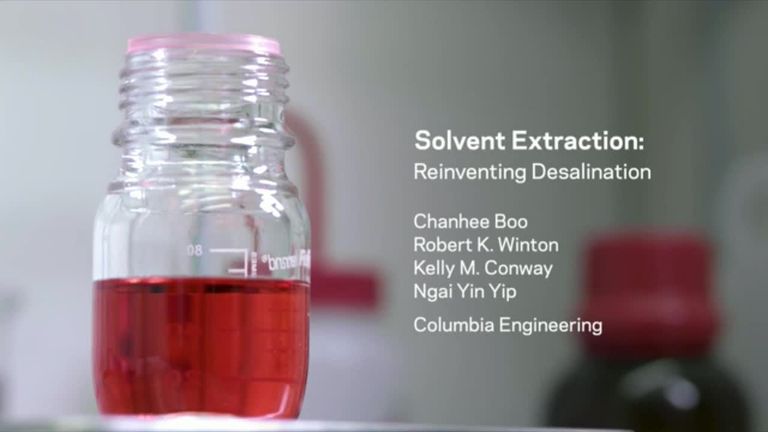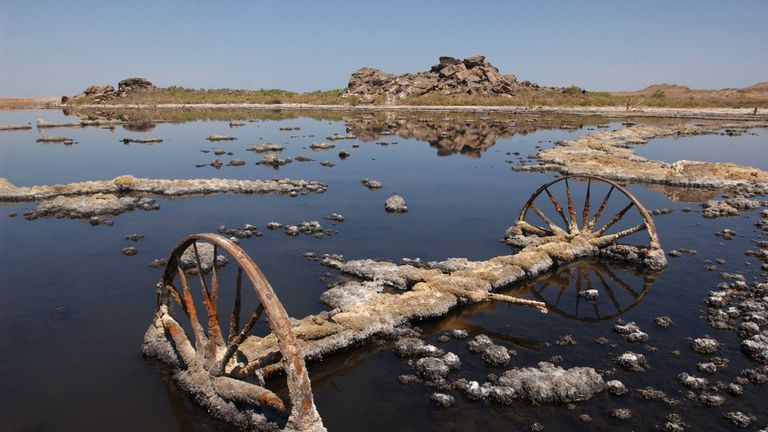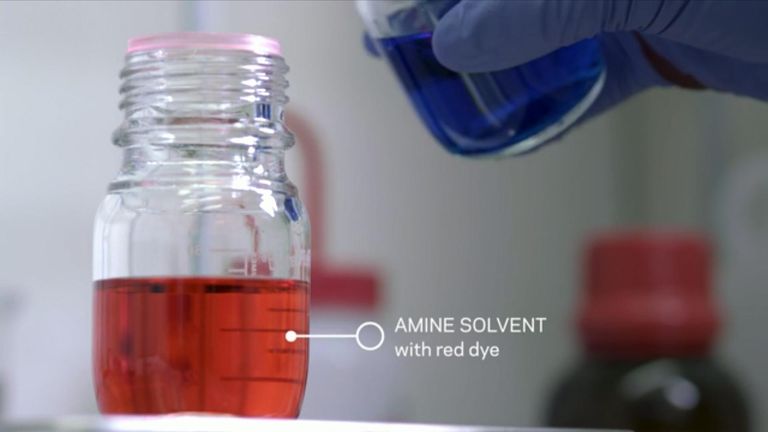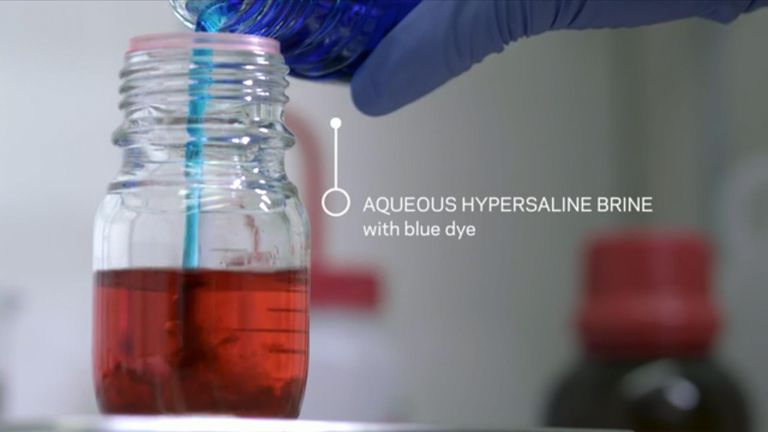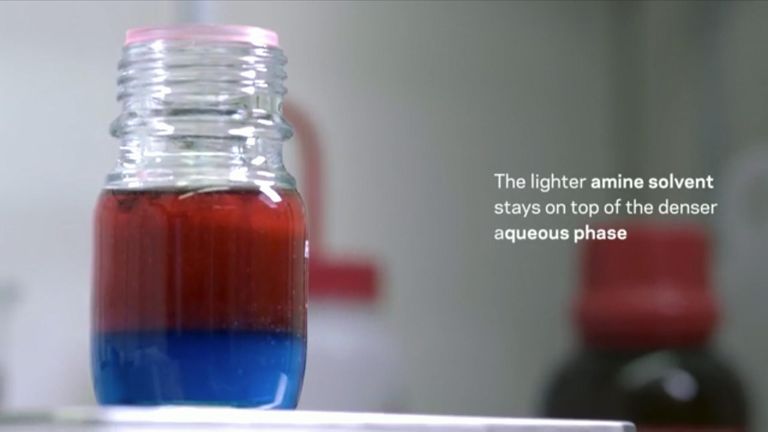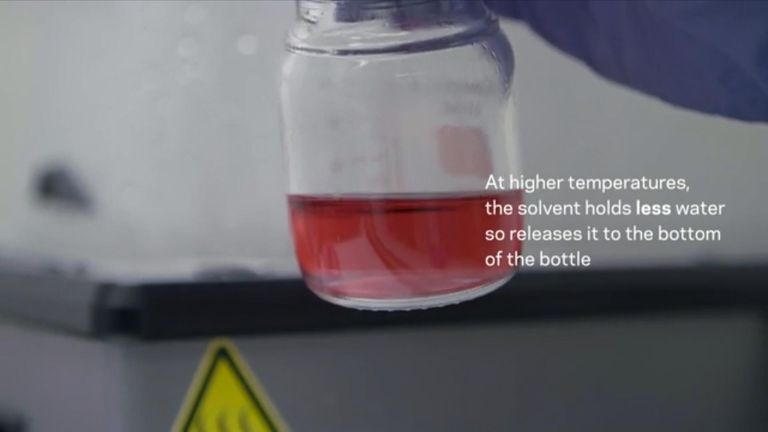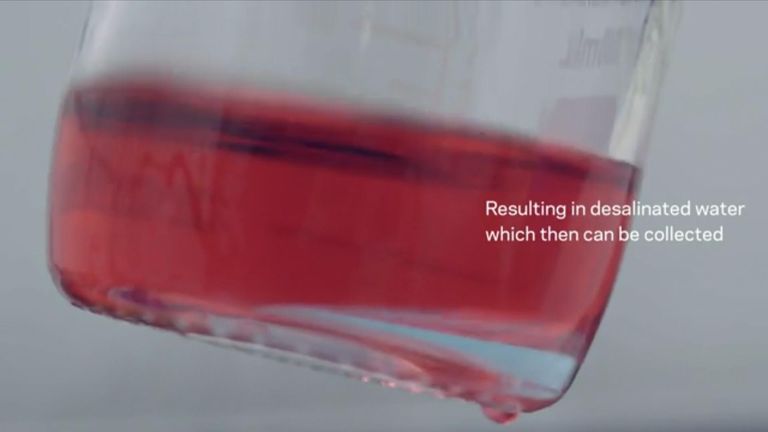Scientists figure out new way to remove salt from water
The solvent-based method could be much cheaper to use than reverse osmosis or distillation based on water evaporating,
Tuesday 7 May 2019 13:18, UK
Brine water produced by the oil and gas industry contains even more dissolved salts than ocean water, and is a growing environmental concern - but scientists have figured out a new way to treat it.
These hypersaline brines can pollute the fresh water resources which communities depend on, and are difficult to treat.
But a team of engineers from Columbia University in the US say they have now developed a radical new approach to desalinating them.
The method, known as "temperature swing solvent extraction" (TSSE), involves mixing the hypersaline brine with an amine solvent.
Scientists say the method can desalinate very high-salinity brines, up to seven times the concentration of seawater. This is more than both the method currently used for seawater desalination, known as reverse osmosis, and the water evaporation method can achieve.
The method was published in the scientific journal Environmental Science & Technology Letters.
Once it is mixed in the brine, the solvent, which is less dense, is lifted to the top of the brine.
The mix is then placed on a room temperature bath to help complete the water extraction - and after that the solvent is decanted from the mixture.
A warm water bath then provides a temperature swing which de-mixes the processed water from the solvent - because the solvent is less able to hold water at higher temperatures.
When the solvent releases the water, it sinks to the bottom of the bottle - from where it can be collected.
Assistant professor Ngai Yin Yip, who published the paper, said: "I thought solvent extraction could be a good alternative desalination approach that is radically different from conventional methods because it is membrane-less and not based on evaporative phase-change.
"Our results show that TSSE could be a disruptive technology - it's effective, efficient, scalable, and can be sustainably powered."
Crucially, the solvent method is powered by low-grade heat, under 70C (158F), meaning it is far less energy-intensive to use, and can remove up to 98.4% of the salt in these brines and recover high amounts of water.
"We think TSSE will be transformational for the water industry," Dr Yip added.
"It can displace the prevailing practice of costly distillation for desalination of high-salinity brines and tackle higher salinities that reverse osmosis cannot handle.
"We can eliminate the pollution problems from these brines and create cleaner, more useable water for our planet."
